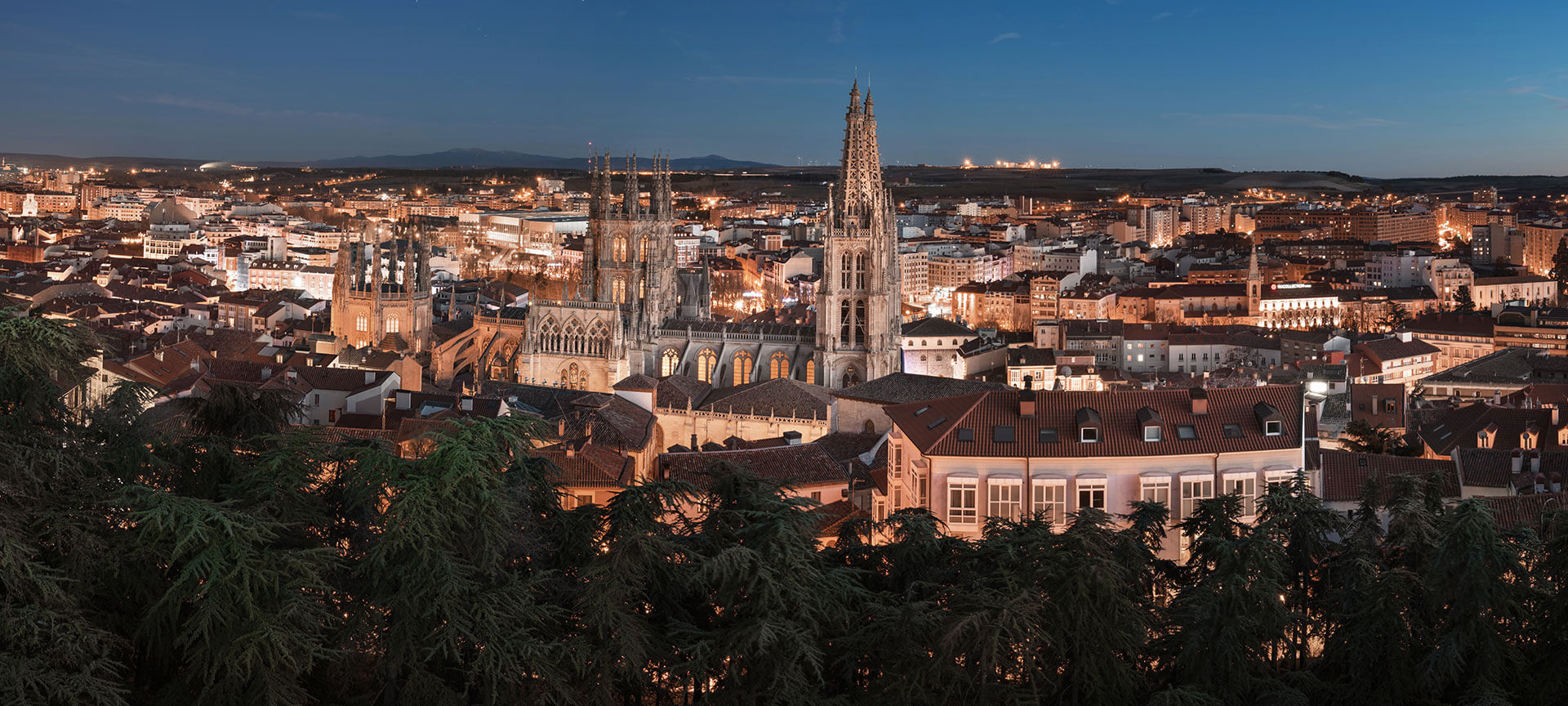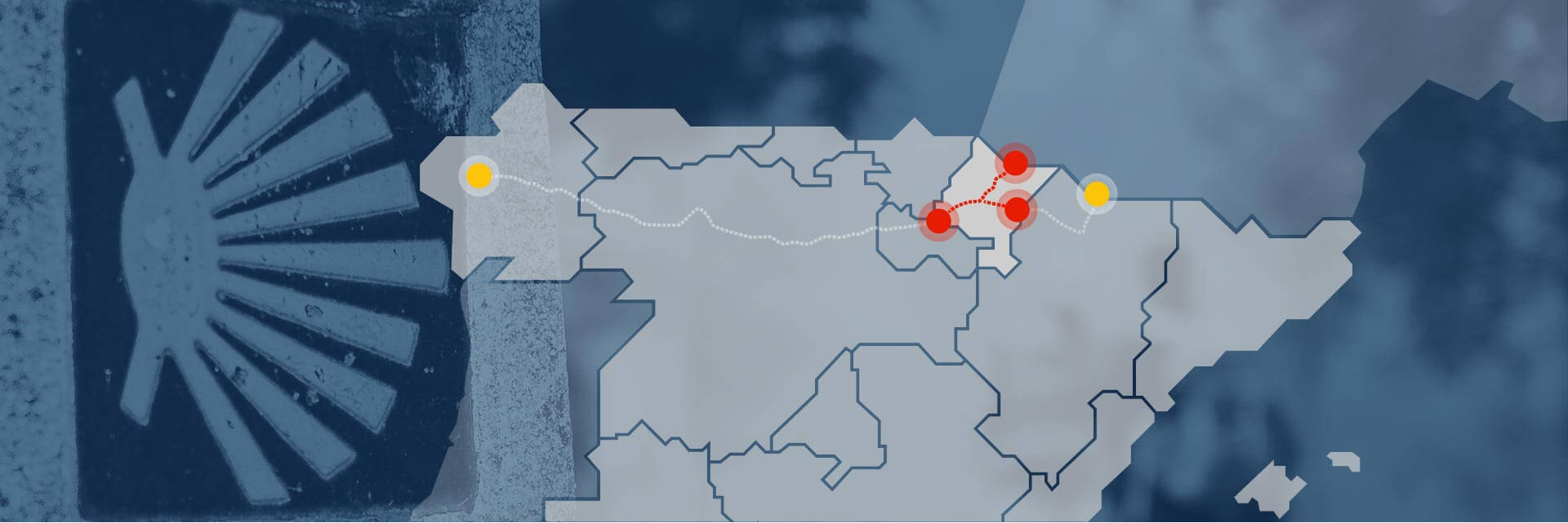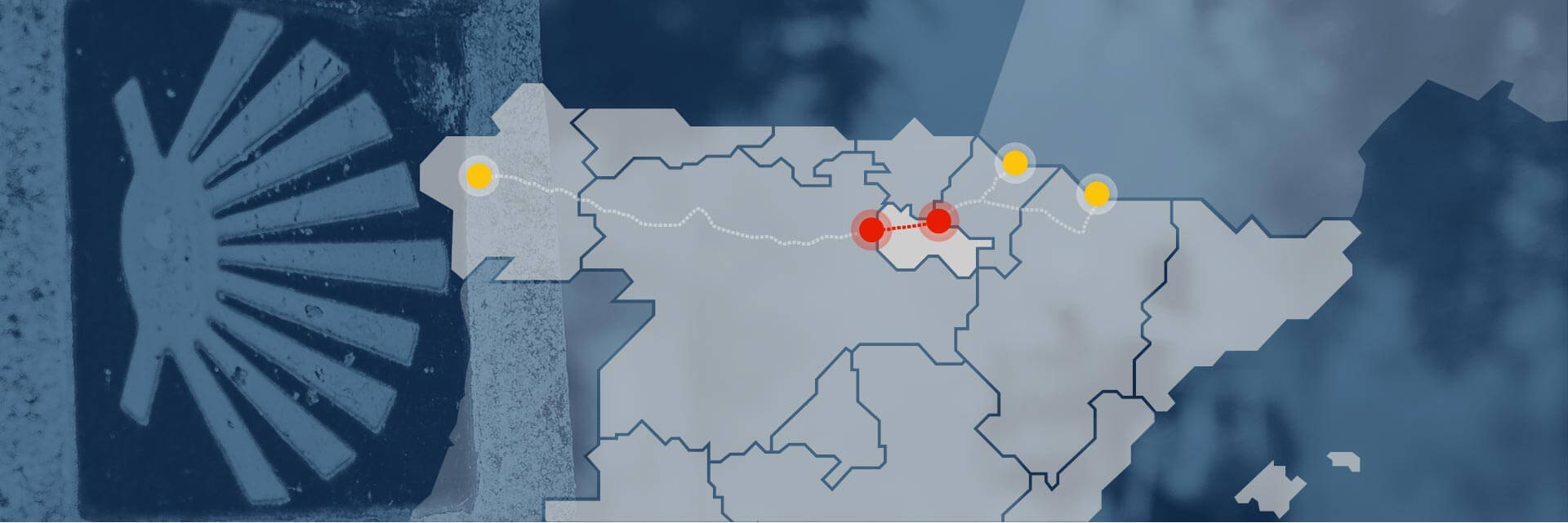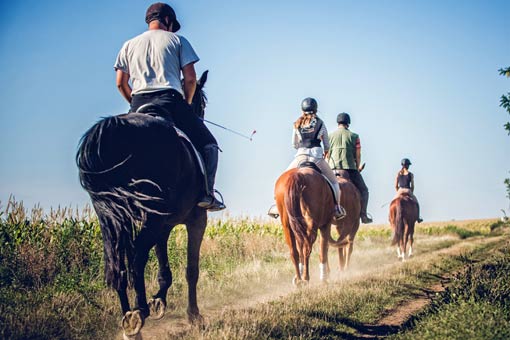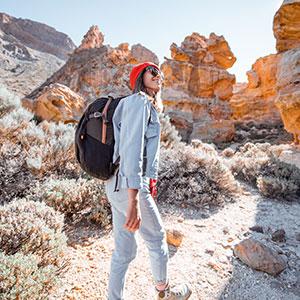
Aragón
Approximate distance: 150 kilometres.Recommended stages: 6 or 7.You’ll see spectacular scenery as you descend from the high Pyrenees, from the Somport mountain pass to the green valleys on easy roads. The French Way in Aragón is the start of the adventure for many pilgrims, and passes through charming villages where the vernacular architecture has hardly changed for centuries. Villanúa and Castiello de Jaca are good examples. At Puente de la Reina, this part of the French Way joins the branch that begins in Navarre.Jaca is the largest town on this part of the route, and is often quite busy in late autumn and all through winter, thanks to its proximity to ski resorts. The cathedral and the citadel are must-sees.
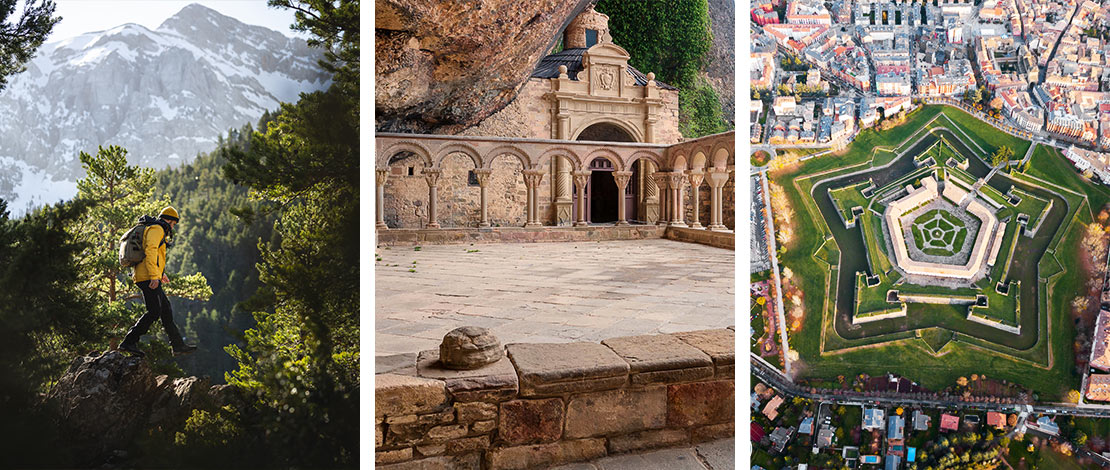
You’ll like: - The amazing views as you walk through the Pyrenees. Take your time to enjoy the sweeping views from Mianos, Canal de Berdún, Arrés, and other vantage points as you walk down into the valleys.- The Romanesque religious architecture found all along the route. Some of the most interesting examples are Jaca Cathedral, the monasteries of San Juan de la Peña and Santa Cruz de la Serós, and the shrine of Santa María de Iguácel.- Looking at the sky… day and night. During the day you’re likely to see bird life - there are over 200 species of birds in the area (including Egyptian vultures, bearded vultures, and Bonelli's eagles), and when the sun goes down, a clear sky for stargazing.- The moments of inspiration and relaxation that come from this natural setting, with very different landscapes on view according to the seasons.World Heritage sites to visit: Pyrenees-Monte Perdido is a large natural area in Aragon and a World Heritage site. The French Way runs through a large part of this mountain range. And if you have time, further south in the region you can see another World Heritage complex: the many examples of Aragonese Mudéjar art in the provinces of Teruel and Zaragoza.The main stops on the French Way in Aragón: Canfranc – Villanúa – Castiello de Jaca – Jaca - ArrésMore information: The French Way in Aragon









